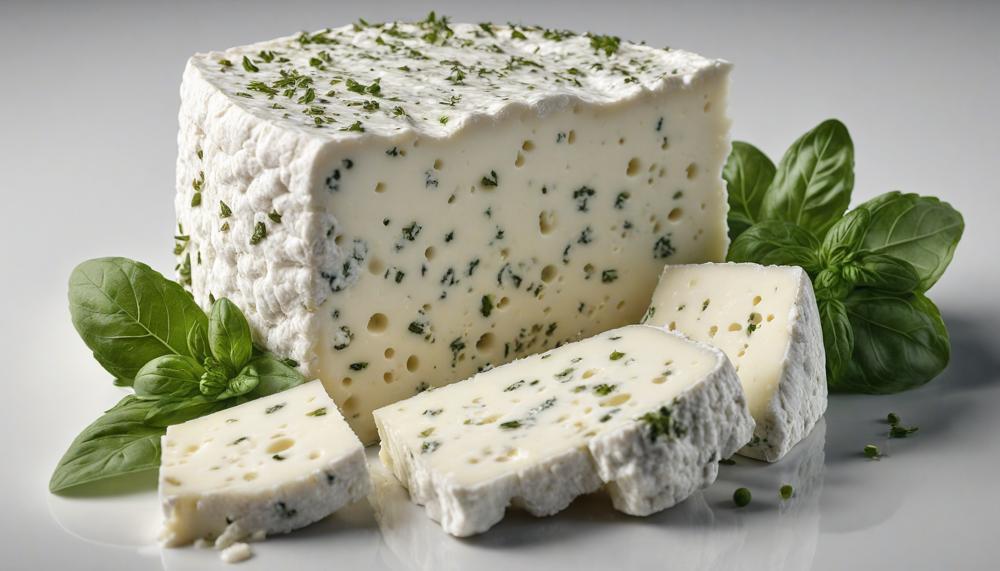No, it’s not safe to eat moldy feta cheese. While some cheeses can be safely consumed even with mold, feta is not one of them. Mold growing on feta cheese can indicate the presence of harmful bacteria, which can cause food poisoning and other health issues.
Understanding food safety regarding moldy cheeses is crucial for anyone who enjoys dairy products. Not all molds are harmful, but the specific conditions and types of mold that can grow on feta make it a risky bet. The moist and crumbly nature of feta provides an ideal environment for unwanted mold to thrive, increasing the likelihood of harmful bacteria.
Key Takeaways:
- Direct Answer: Eating moldy feta cheese is unsafe.
- Explanation: Harmful bacteria can accompany the mold on feta, posing health risks.
- Importance: Recognizing safe vs. unsafe mold in cheeses helps prevent foodborne illnesses.
- Actionable Advice: Discard moldy feta cheese to avoid potential health hazards.
By grasping these points, you can make informed decisions about consuming cheese and ensure you enjoy your meals without compromising your health.
Contents
Good Mold vs. Bad Mold
When it comes to food safety, especially with feta cheese, discerning between good mold and bad mold is vital.
| Aspect | Good Mold | Bad Mold |
| Type | Penicillium roqueforti, Penicillium camemberti | Various types, often unidentifiable by sight |
| Appearance | Typically blue or white, consistent with the cheese’s texture | Fuzzy, slimy, green, black, or pink discoloration |
| Odor | Earthy, characteristic of aged cheese | Off-putting, sour, or musty smell |
| Texture | Firm and integral to the cheese structure | Fuzzy, slimy, or overly soft |
| Safety | Safe and contributes to flavor and texture | Potential health risk, indicates spoilage |
| Role | Enhances taste, aids in aging process | Indicates decay and potential toxins |
What Should I Do with Moldy Cheese?
When dealing with moldy cheese, your approach should vary depending on the type of cheese. Here’s a breakdown of what to do:
| Type of Cheese | Action | Reason |
| Soft Cheeses (e.g., cottage cheese, cream cheese, ricotta) | Discard | Mold can penetrate the entire cheese, making it unsafe to eat. |
| Shredded, Crumbled, or Sliced Cheeses | Discard | Similar to soft cheeses, mold can spread throughout, posing a health risk. |
| Hard and Semisoft Cheeses (e.g., cheddar, colby, Parmesan, Swiss) | Cut off moldy parts | Cut at least 1 inch around and below the mold spot without touching the mold to avoid cross-contamination. These cheeses are dense, and mold usually doesn’t spread far beyond the surface. |
What If I Ate Moldy Cheese?

Eating moldy cheese can have different outcomes based on the type of cheese and mold involved.
| Type of Cheese | Potential Outcome | Advice |
| Intentionally Moldy Cheese (e.g., Blue Cheese, Brie) |
Usually Safe | These cheeses are made with safe, edible molds. Ensure there are no off smells or unusual changes in texture. |
| Hard Cheese (e.g., Cheddar, Parmesan) |
Generally Safe with Precautions | Cut off at least 1 inch around and below the moldy spot. The rest of the cheese should be safe to consume. |
| Soft Cheese (e.g., Cottage Cheese, Cream Cheese) |
Risk of Harmful Bacteria | Discard entirely. Soft cheeses can harbor harmful bacteria that may not be visible. |
How Can I Prevent Cheese from Molding?
The short answer is: By using proper storage techniques, you can significantly reduce the chances of cheese developing mold. Here are some effective methods to keep your cheese fresh and mold-free:
Use Cheese Paper or Parchment Paper:
Wrap your cheese in cheese paper or parchment paper. This allows the cheese to breathe while still retaining enough moisture. After wrapping, place it in a partially sealed plastic bag to create a barrier against plastic, preventing it from drying out.
Wrap Pre-Sliced Cheese Properly:
For pre-sliced cheese, wrap the slices in paper and return them to the original unclosed bag for storage. This method maintains the cheese’s freshness and prevents mold growth.
Apply Oil to Cut Faces of Cheese:
Rub the cut faces of cheese with olive, canola, or vegetable oil before storing them in an airtight container in the fridge. The oil forms a protective layer, making it easier to wipe off any mold that might develop on the oil rather than the cheese itself.
Clean Mold Promptly:
If mold does appear, simply wipe it off with a paper towel and rinse the cheese under lukewarm water. This helps remove any superficial mold without affecting the cheese quality.
Avoid Using Lemon Wedges:
Using lemon wedges to prevent mold is not effective. Stick to the other methods mentioned for better results.
Proper storage techniques not only extend the freshness of your cheese but also reduce waste caused by mold growth. Here is a summary of the key techniques:
What Cheeses Are Least Likely to Mold?
Cheeses least likely to mold are long-aged, hard cheeses such as Parmesan, pecorino, older Cheddars, and aged Gouda.
These cheeses age for 8 months or longer, which reduces their moisture content and makes them less susceptible to mold growth.
| Cheese Type | Characteristics | Reason for Low Mold Risk |
| Parmesan | Hard, granular texture, aged 12-36 months | Low moisture content and long aging process hinder mold growth |
| Pecorino | Hard, often salty, aged 8-12 months | High salt content and low moisture levels prevent mold |
| Older Cheddar | Firm, sharp flavour, aged 12-24 months | Extended aging reduces moisture, creating an environment unfavourable to mold |
| Aged Gouda | Firm, caramel-like, aged 18-36 months | Low moisture and dense texture impede mold formation |
These cheeses’ extended aging process removes excess moisture, which is a key factor in mold development. Their firm, dense textures and, in some cases, higher salt content create environments less conducive to mold growth.
Conclusion
In conclusion, when it comes to the safety of consuming moldy feta cheese, the answer is a resounding no. Mold on feta cheese can harbor harmful bacteria that pose significant health risks, including food poisoning and other related illnesses. While some cheeses can be salvaged by cutting off the moldy parts, feta’s crumbly texture and moist environment make it a breeding ground for unwanted mold growth.
It is crucial to differentiate between good mold and bad mold when dealing with cheese. Good molds like Penicillium roqueforti and Penicillium camemberti contribute to the flavor and texture of certain cheeses, while bad molds indicate spoilage and potential health hazards. Proper storage techniques, such as refrigeration in brine, can help prevent the growth of harmful mold on feta cheese.
If you encounter mold on your feta or any other type of cheese, it is advisable to err on the side of caution and discard it to avoid risking your health. By understanding the distinctions between safe and unsafe molds in cheeses, you can make informed decisions about what you consume, ensuring a delightful dining experience without compromising your well-being.




